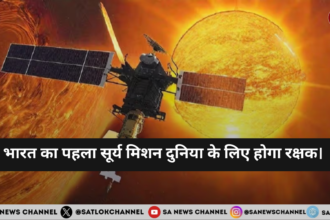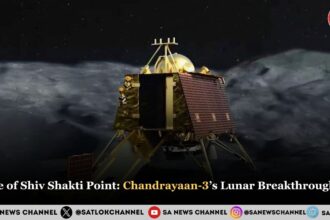History of Space Exploration: How vast is our universe ! Our planet Earth is indeed a speck of the universe. There are millions of planets other than Earth present in this vast universe. Have you ever wondered who was the first to speculate and formulate theories about space? How did we know so much about space? What were the earliest space programmes which shaped the present day Astronomy?
Buckle up for a journey to the history of space exploration. This blog takes you to the most adventurous and the unexplored journey of space exploration.
History of Space Exploration: Early Space Theories
Before we take you on a journey to the history of space exploration, let’s have an eye through the earliest theories about space. Here’s a quick journey through early space theories:
1. Observations of the Ancient Civilizations:
The Ancient Babylonian and Egyptian civilizations conscientiously recorded celestial events, although their understanding was largely astrological and mythological.
2. Theories of Greek Philosophers
The Ancient Greek philosophers made an immense contribution to the early theories on space. Here are some key theories of the Greek thinkers.
- Pythagoras (6th century BCE): Suggested the idea that the Earth is a sphere. He further added that the Earth, Stars and planets are all a part of a harmonious, mathematical order.
- Aristotle (4th century BCE): Supported the geocentric model, with Earth at the centre of the universe and all the celestial bodies revolving around the Earth.
- Aristarchus (3rd century BCE): Proposed an early heliocentric model stating that the Sun is the centre of the universe and Earth and all other celestial bodies revolve around the Sun, but it wasn’t widely accepted.
3. Ptolemy (2nd century CE):
Developed a detailed geocentric model with his work ‘Almagest’, which dominated for over a millennium.
4. Copernicus (16th century):
Revived the heliocentric theory, placing the Sun at the center of the universe and Earth and other planets revolving around the Sun.
5. Kepler (17th century):
Kepler’s laws were a significant breakthrough as they accurately described the motions of the planets. It was Kepler who formulated the laws of planetary motion, proving planets orbit the Sun in elliptical paths.
6. Galileo (17th century):
Galileo’s work turned out to be a turning point in the history of space exploration. Galileo’s work proved crucial in shifting the view from a geocentric to a heliocentric understanding of the universe.
Galileo used a telescope to provide evidence for the heliocentric model, observing moons orbiting Jupiter and phases of Venus. His discoveries laid the groundwork for future astronomers and significantly advanced our knowledge of space.
7. Newton (17th century):
Newton’s work provided a comprehensive framework for understanding the motion of objects in space and laid the foundation for classical mechanics. The theories of Newton paved a way for accurate predictions of planetary orbits and explained phenomena such as the tides and the motion of comets.
8. 19th Century Discoveries:
Telescopic advancements during the 19th century led to the discovery of new planets like Uranus and Neptune.
These theories laid the foundation for the history of space exploration.
History of Space Exploration: World War 2 and The Cold War
Even though many theories were being given regarding space, what is known as modern space exploration did not come into existence until the beginning of World War 2. It was World War II that played a pivotal role in the history of space exploration. Here are some key points:
1. Development of Rocket Technology:
World War 2 accelerated research into rocket technology, particularly through the German V-2 rocket program. German V-2 rockets were the first man made objects to reach the edge of space.
2. Scientific Talent:
Following World War 2, many expert scientists and engineers from Germany, including Wernher von Braun, were recruited by both the United States and the Soviet Union. It was the expertise of these scientists and engineers which further aided the advancements in rocketry and space exploration.
3. Cold War Competition:
The technological advancements made by the United States and the Soviet Union during World War II laid the groundwork for the Cold War space race between the two superpowers. Both these superpowers sought to demonstrate their technological superiority through impressive feats in rocketry and spaceflight.
4. Military Applications:
The early development of rockets mainly targeted military applications, such as intercontinental ballistic missiles (ICBMs) and were not mainly tied to the space exploration. This dual-use technology drove rapid advancements in both fields.
The geopolitical tensions of the Cold War provided the necessary financial aid and resources to support the space projects, leading to the space race between them.
History of Space Exploration: The Space Race
The Space Race was a gripping chapter in the history of Space Exploration. It was an intense competition between the Soviet Union (USSR) and the United States (USA) which primarily focused on achieving significant milestones in space exploration.
1. Sputnik 1 (1957):
The Soviet Union launched the first ever artificial satellite, Sputnik 1, on October 4, 1957. This was a monumental achievement for the Soviet Union as it highlighted the supremacy of the USSR during the early stages of the Space Race.
2. Laika the Dog (1957):
Following Sputnik 1, the Soviets sent Laika, the first animal to orbit Earth, aboard Sputnik 2, though she didn’t survive the mission due to the high temperatures of the spacecraft during the journey.
3. Explorer 1 (1958):
In response to Sputnik 1 and to showcase their technological advancement, the United States launched its first satellite, Explorer 1, on January 31, 1958.
4. Yuri Gagarin:
The First Human in Space (1961): Soviet cosmonaut Yuri Gagarin became the first human to orbit Earth on April 12, 1961. This achievement by the USSR further intensified the Space Race.
5. Luna Program (1959):
The USSR’s Luna program included several robotic missions to the Moon. One of them was Luna 2. Luna 2 also proved to be a successful project for the USSR. Luna 2 became the first manmade object to reach the surface of the moon in 1959.
6. Apollo Program:
Till this time, the Soviet Union was outshining the United States in the Space Race. But the Apollo program by the United States’ which aimed to land humans on the Moon proved a massive success for the United States in the history of space exploration.
On July 20, 1969 the world famous mission of the United States, Apollo 11 became successful. Apollo 11 proved successful in landing two astronauts Neil Armstrong and Buzz Aldrin on the Moon.
Voyager 1
Launched by NASA on September 5, 1977 Voyager 1 became a part of the Voyager programme. This program was set to visit the outer planets. This space probe visited Jupiter in 1979 and Saturn in 1980 to provide images and other data of these planets. It also sent information about the moons of these planets.
Voyager 2:
Voyager 2 was another incredible spacecraft launched by NASA as a part of the Voyager journey. It is the only space mission to have visited all the four planets including Jupiter in 1979, Saturn in 1981, Uranus in 1986 and Neptune in 1989.
Voyager 2 is still in operation and is assumed to send data to NASA till about 2030.
7. The First Ever International Collaboration for Space Exploration:
Despite the competition, the space race also led to several international collaboration, such as the Apollo-Soyuz Test Project in 1975, where a US and Soviet spacecraft docked in space.
■ Also Read: Big Ongoing Steps for India Space Centers in Terms of Funding
The late 1970s witnessed an end of the space race. During this time, the focus of both the superpowers shifted from competition to collaboration. This led to the beginning of joint missions and International Space Stations. The Space Race was a fascinating period of history of space exploration that pushed the boundaries of human achievement.
History of Space Exploration: Collaboration, not competition
Following the Space Race, the history of space exploration witnessed a new phase characterized by technological advancements, international cooperation, and a broader focus on scientific discovery. Here are some key developments:
1. International Space Station (ISS):
The International Space Station was launched in 1998. This project was a collaboration which included several space organizations including NASA, Roscosmos (Russia), ESA (Europe), JAXA (Japan), and CSA (Canada). The ISS serves as a space environment research laboratory.
2. The Shuttle-Mir Program:
Started in the 1990s, the Shuttle-Mir program was a hallmark of the cooperation between the space organisations of the two superpowers USA and the USSR. This program saw the American shuttle docking with the Russian space station Mir.
3. Hubble Space Telescope:
Launched in 1990, the Hubble Space Telescope is the most iconic instrument in the history of space exploration. The Hubble Space Telescope has provided us stunning photos and shocking data of the universe.
4. Mars Rovers:
NASA’s Mars Exploration Rover mission led to the exploration of the Martian surface. The aim of this mission was to search for signs of past life and conduct geological research on the surface of Mars.
All these collaborations led to an overall development and the advancements in the field of space research.
Involvement of Private Sector
Many private companies including SpaceX and Blue Origin have revolutionized space travel. These companies with their advanced and sustainable technology have opened the doors for commercial spaceflight.
History of Space Exploration: Recent Notable Space Exploration Missions
The history of space exploration is incomplete without the mention of some recent space exploration programs. There have been several groundbreaking space exploration missions. Here are some highlights:
1. New Horizons:
After successfully completing its historic flyby of Pluto in 2015, New Horizons continued its journey and in 2019 conducted a flyby of Arrokoth which is the most distant object explored.
2. Juno:
This spacecraft was launched in 2011 with an aim to study the atmosphere, magnetic field, and gravitational field of the biggest planet of the solar system, Jupiter. Since 2016, Juno has been successfully providing information regarding the planet.
3. James Webb Space Telescope (JWST):
To study the development of stars and planets, JWST was launched in 2021. This telescope uses infrared light to offer an unobstructed view of the universe.
4. Europa Clipper:
In order to assess the potential habitability of Europa, the moon of Jupiter and its subsurface ocean Europa will be launched this year in 2024.
These developments have not only expanded our understanding of the universe but also opened new frontiers for exploration and discovery.
Upcoming Space Exploration Programs
History of Space Exploration: Before we end this journey to the history of space exploration, let’s have a look through exciting upcoming space exploration programs that are set to push the boundaries of our knowledge and technology. Here are a few to list:
1. NASA’s Artemis Program
Set to return humans to the Moon, NASA’s Artemis Program is scheduled for 2025.
For the testing of systems before Artemis III mission, which plans to land astronauts on the lunar South Pole in September 2026,
The Artemis II mission, scheduled for September 2025, will carry a crew of four astronauts to the moon.
2. NASA’s Mars Sample Return:
History of Space Exploration: Scheduled for Early 2030s, NASA’s Mars Sample Return Mission aims to study the Martian soil and rocks with an aim to study the geology of the planet and to find signs of past life. This exciting multiple step mission is a collaboration between NASA and ESA.
3. Japan’s Martian Moons eXploration (MMX) Mission:
Japan’s MMX mission is scheduled for 2026. It aims to collect samples from Phobos, one of the the Moon of Mars and their return to Earth for further studies.
4. Indian Space Research Organisation (ISRO) Missions:
ISRO has several exciting missions lined up, to list a few :
- Gaganyaan 1 mission:
Scheduled for launch in December 2024, this is India’s first manned space mission.
- NISAR (NASA-ISRO Synthetic Aperture Radar):
Scheduled for 2025, this mission aims to cover the Earth Observation.
- Mangalyaan-2 (Mars Orbiter Mission 2)
To study the Martian surface and atmosphere, this mission is scheduled for latter half of 2024
These missions represent just a glimpse of the incredible work being done in the history of space exploration.
Satlok, Our Real Home is 16 Shankh Kos (4800 Quadrillion k.m.) From Earth
Saint Rampal Ji Maharaj, in his spiritual discourses, provides the knowledge that this Earth is a punishment place for us. This is the reason why every living being face the problem of birth and death on this earth. Satlok which is our ultimate home is the the eternal place of happiness. There is no birth and death, sorrow or pain in Satlok. All living beings after going to Satlok reside there with happiness.
Saint Rampal Ji Maharaj ji is the true spiritual saint who can provide true scripture based worship to everyone. Readers are requested to take initiation from Saint Rampal Ji Maharaj to end their cycle of birth and death.
History of Space Exploration: FAQs
Question: What is ‘Space Race’?
Answer: The Space Race was an intense competition between the Soviet Union (USSR) and the United States (USA) which primarily focused on achieving significant milestones in space exploration.
Question: The first person to go to Space?
Answer: Soviet cosmonaut Yuri Gagarin became the first human to orbit Earth on April 12, 1961.
Question: Who can end the cycle of birth and death ?
Answer: Saint Rampal Ji Maharaj can end one’s cycle of birth and death.
Question: How far is Satlok from Earth?
Answer: Satlok is 16 Shankh Kos (4800 quadrillion k.m.) from the Earth.









